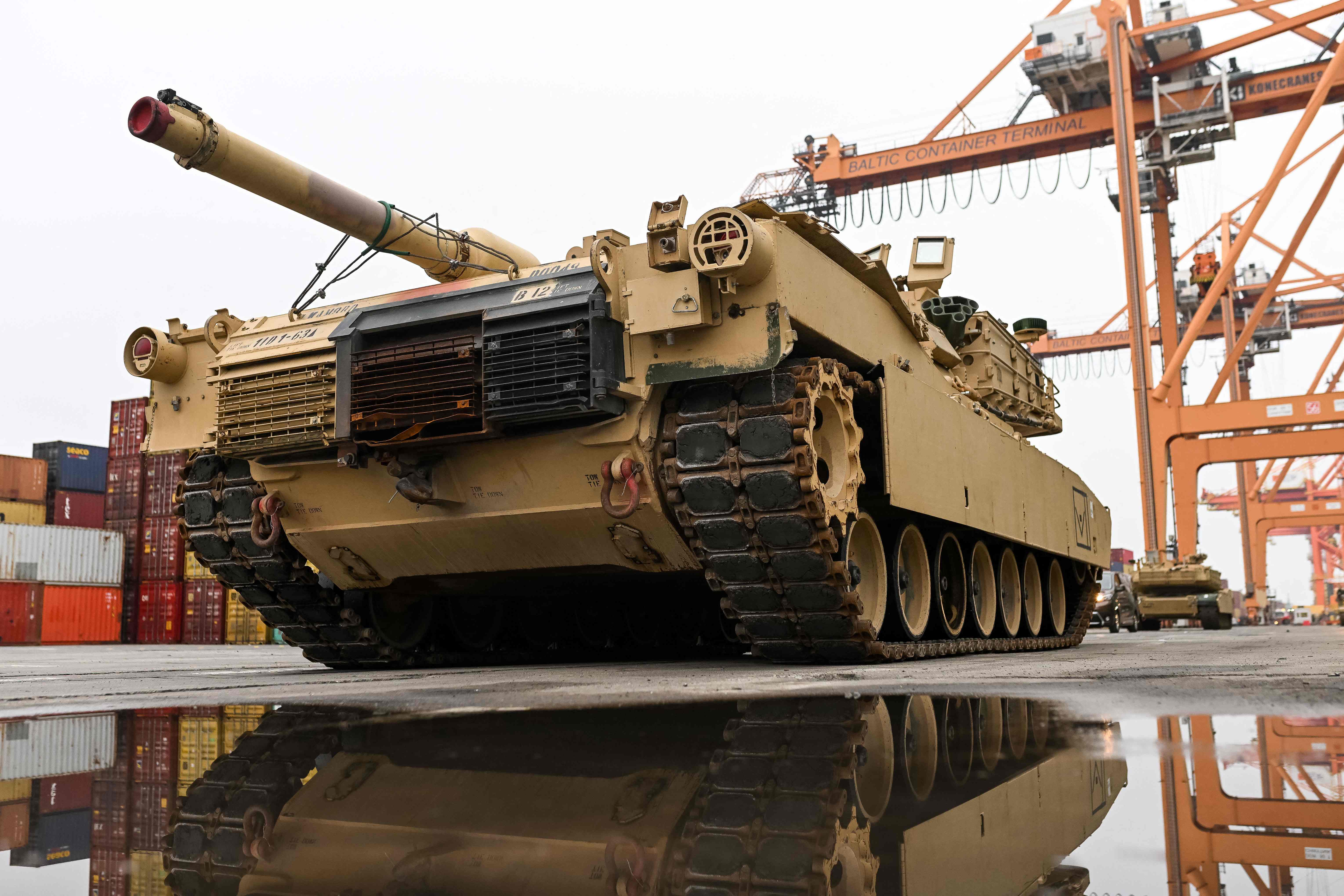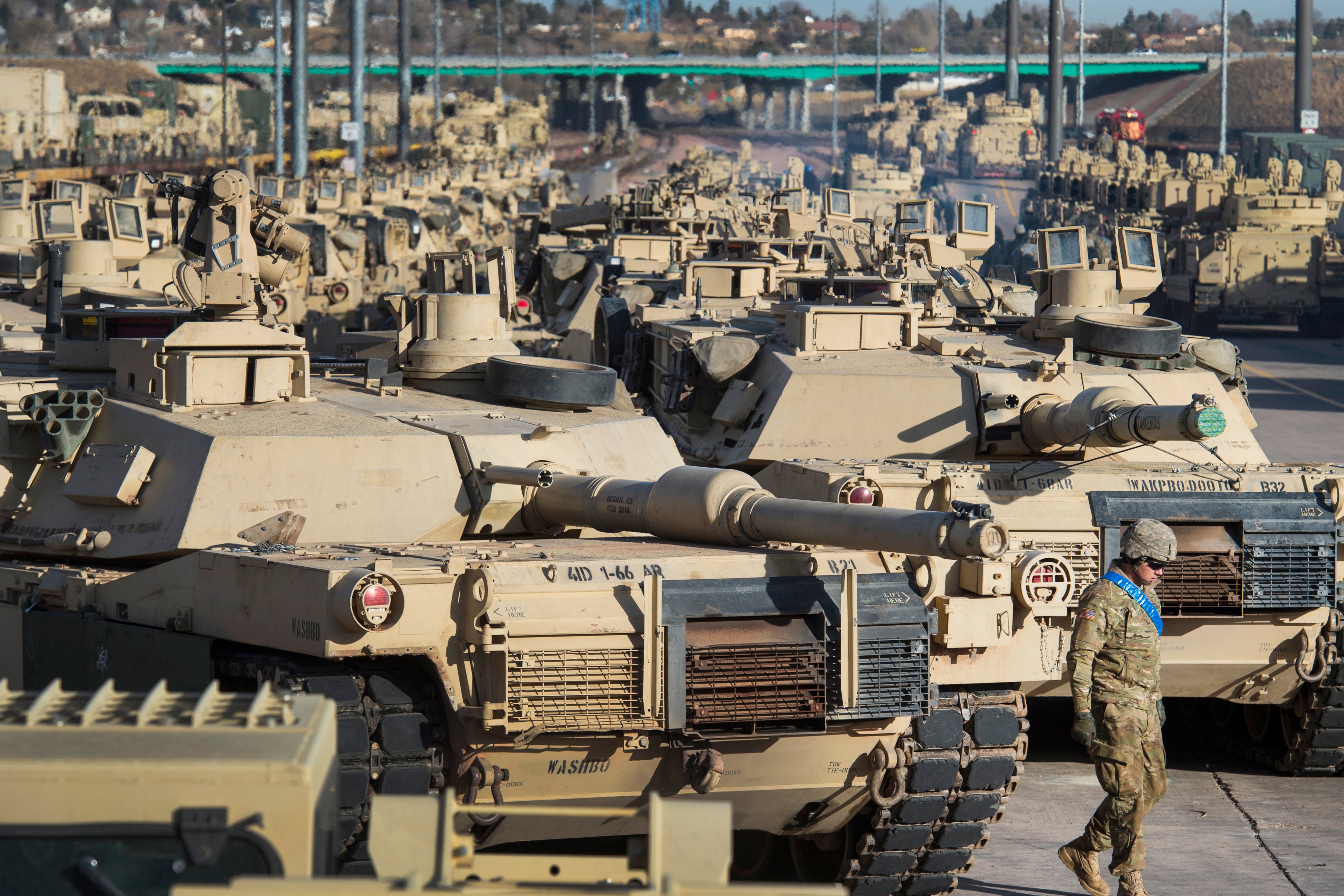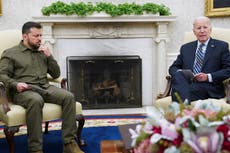What are Abrams tanks and why is the US sending them to Ukraine?
American models being donated to Kyiv have a reputation for being high maintenance and requiring time-consuming additional training to master

Ukraine’s military has reportedly succeeded in driving tanks through Russia’s defensive line in western Zaporizhzhia, according to the Institute for the Study of War, a major breakthrough after Vladimir Putin’s forces spent the winter establishing a tough obstacle course of anti-tank ditches, artillery nests and other obstructions.
The institute could not confirm that Ukrainian troops had followed suit at the breakthrough point near Verbove but the news is nevertheless a welcome indication that Kyiv’s counteroffensive is bearing fruit as it seeks to drive the invader from its territory.
Ukrainian president Volodymyr Zelensky is currently in North America seeking to shore up support from his US counterpart Joe Biden and Canadian prime minister Justin Trudeau and has already flown out of Washington with the promise of a new $325m military aid package for his country that will include air defence systems and other weaponry to help it through what promises to be another trying winter of combat.
Earlier this year, the US pledged to send 31 of its M1 Abram battle tanks, worth an estimated $400m, to Ukraine to help the resistance fight back against the Russian onslaught.
Anatoly Antonov, Russia’s ambassador to the US, reacted to the announcement in late March by saying Mr Biden’s decision amounted to “another blatant provocation” against Moscow, pledged that the tanks would be destroyed and warned the West it would come to regret the “delusion” that Ukraine could ever win the day.
Russian state TV subsequently made a point of mocking the Abrams as “battered” and prone to getting stuck in a segment downplaying the threat the new additions to Kyiv’s arsenal pose.
Asked about a delivery date for the tanks during Mr Zelensky’s September visit to the White House, Pentagon spokesperson brigadier general Patrick Ryder said “everything is on schedule”.
He added: “For security reasons, I’m not going to be able to go into specifics in terms of when the tanks will arrive, other than to say that we expect them to arrive in Ukraine in the coming days and weeks.”
Mr Zelensky has said he believes tanks are crucial to replenish his nation’s military hardware and hopes it will give his side a crucial advantage as it seeks to recapture territory taken by Moscow’s forces earlier in the conflict while attacks on its cities continue.
In response to the Ukrainian president’s appeal this spring, Germany originally dithered on the question of whether to send tanks but did eventually agree to ship a number of Leopard 2 models.
When it comes to the M1s, experts have warned of the complex logistics involved in getting these high-tech vehicles to the battlefield and that they require extensive and tricky maintenance.
The first M1 tank was manufactured by American armoured vehicle manufacturer General Dynamics Land Systems in 1978 and was first delivered to the US Army in 1980.

Each model costs around $10m to make, according to Reuters.
It has to be crewed by a team of four (driver, commander, loader and gunner), has a maximum speed of 42 miles per hour, has a maximum range of 624 miles and runs on a 1,500 horsepower gas turbine engine.
The M1 is armed with an M256 120mm smoothbore cannon, as well as two machine guns: a 12.7mm and a 7.62mm M240.
Defence industry expert Sydney Freedberg described them as “big vehicles, heavily armoured” to Al Jazeera, adding that they are “much better protected than anything the Soviets built, or anything the Russians currently have.”
He also cautioned that they have been used far less often in Europe than the Leopard and could end up posing the Ukrainians problems, given that they require additional training and will need spare parts, warehousing and a high degree of care.
“It guzzles fuel and the engine is difficult to repair and maintain,” Jack Watling, a senior research fellow for land warfare at the Royal United Services Institute, has also warned.
More positive about their potential impact – while still favouring the Leopards over all – was retired US army general Mark Hertling, who commanded the 1st Armored Division in Iraq during the troop surge of 2007 to 2008, and who said in an X thread: “The M1-series, in my view, is the best in the world.”
He too stressed that training was “critical”, adding: “Having fired T-72s, Chieftains, Challengers, Leo IIs & Abrams, the M1 requires the most turret training.”
Join our commenting forum
Join thought-provoking conversations, follow other Independent readers and see their replies
Comments


Bookmark popover
Removed from bookmarks